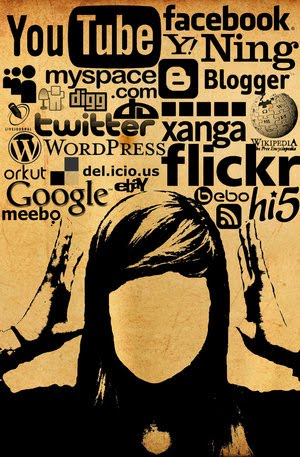 nnIn an era of fast-paced lifestyles and advancements in digital technology, it seems as if we are constantly racing against an unidentifiable technological clock, one that is constantly evolving to reveal the next greatest, cutting-edge masterpiece. Often times, such advancements are made in fields such as medicine, engineering and other sciences. In reality, however, one key aspect that is consistently being affected by technology is our commodity consumption experiences—aka shopping.nnIn the past decade alone, our shopping experiences have changed drastically as our reliance on technology has grown exponentially. But what is driving these experiences is truly remarkable (or detrimental, depending on how you view it)—across the globe, shopping experiences are becoming less physical and more digital. With the popularity of online shopping, digitally enhanced shopping experiences may seem mundane and obvious, but such enhancements are actually quite in line with our growing reliance on digital and social technologies. As a result, the shopping experience is being pushed far beyond online shopping. In some countries, the technology of shopping has become so advanced that the physical presence of a consumer at a store is no longer needed. In others, digital and technological enhancements are intertwined with the actual shopping experience. Overall, it seems that digital-aided shopping is becoming quite trendy.nn
nnIn an era of fast-paced lifestyles and advancements in digital technology, it seems as if we are constantly racing against an unidentifiable technological clock, one that is constantly evolving to reveal the next greatest, cutting-edge masterpiece. Often times, such advancements are made in fields such as medicine, engineering and other sciences. In reality, however, one key aspect that is consistently being affected by technology is our commodity consumption experiences—aka shopping.nnIn the past decade alone, our shopping experiences have changed drastically as our reliance on technology has grown exponentially. But what is driving these experiences is truly remarkable (or detrimental, depending on how you view it)—across the globe, shopping experiences are becoming less physical and more digital. With the popularity of online shopping, digitally enhanced shopping experiences may seem mundane and obvious, but such enhancements are actually quite in line with our growing reliance on digital and social technologies. As a result, the shopping experience is being pushed far beyond online shopping. In some countries, the technology of shopping has become so advanced that the physical presence of a consumer at a store is no longer needed. In others, digital and technological enhancements are intertwined with the actual shopping experience. Overall, it seems that digital-aided shopping is becoming quite trendy.nn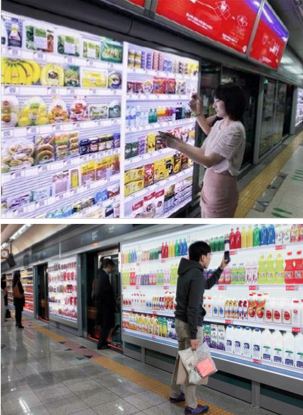 nnSouth Korea is one of the front-runners in the use of digitally enhanced shopping experiences. They have made going to the store completely unnecessary, redefining convenience by means of a cell phone with a QR code reader. Anyone who uses the subway in South Korea has the opportunity to visit a virtual QR code supermarket by simply scanning the QR code of the food they would like to purchase. Within a few hours, users are promised to receive their purchase, delivered straight to their door. And South Korea isn’t the only country utilizing QR codes. China plans on using cell phone activity and QR code scanning to create a virtual, virtual shop—meaning a shop that exists only in the realms of a cell phone pointed at an empty space. Essentially, this would eliminate the need to a brick-and-mortar store and would offer consumers an extremely individualized shopping experience. According to Springwise, the store will actually project over the real world via cell phone. Not only will consumers get a unique experience, but retailers will also save costs by eliminating storefronts and other such costs. But what is eliminated for the sake of convenience also poses a threat to global issues such as unemployment and commerce and trade. How realistic are these virtual shops? Perhaps in countries that have overwhelming populations the risks over overcrowding are “virtually” eliminated, but in most places, shopping is less about the purchasing and more about the experience. How many times do we see young tweens and teenagers roaming the mall simply because they have nothing better to do? Sure creating virtual shopping experiences seems “cool” and convenient, but how will it affect us socially? Even more pressing, what will become of our commodity-obsessed culture if the sensory pleasure of shopping is eliminated?nn
nnSouth Korea is one of the front-runners in the use of digitally enhanced shopping experiences. They have made going to the store completely unnecessary, redefining convenience by means of a cell phone with a QR code reader. Anyone who uses the subway in South Korea has the opportunity to visit a virtual QR code supermarket by simply scanning the QR code of the food they would like to purchase. Within a few hours, users are promised to receive their purchase, delivered straight to their door. And South Korea isn’t the only country utilizing QR codes. China plans on using cell phone activity and QR code scanning to create a virtual, virtual shop—meaning a shop that exists only in the realms of a cell phone pointed at an empty space. Essentially, this would eliminate the need to a brick-and-mortar store and would offer consumers an extremely individualized shopping experience. According to Springwise, the store will actually project over the real world via cell phone. Not only will consumers get a unique experience, but retailers will also save costs by eliminating storefronts and other such costs. But what is eliminated for the sake of convenience also poses a threat to global issues such as unemployment and commerce and trade. How realistic are these virtual shops? Perhaps in countries that have overwhelming populations the risks over overcrowding are “virtually” eliminated, but in most places, shopping is less about the purchasing and more about the experience. How many times do we see young tweens and teenagers roaming the mall simply because they have nothing better to do? Sure creating virtual shopping experiences seems “cool” and convenient, but how will it affect us socially? Even more pressing, what will become of our commodity-obsessed culture if the sensory pleasure of shopping is eliminated?nn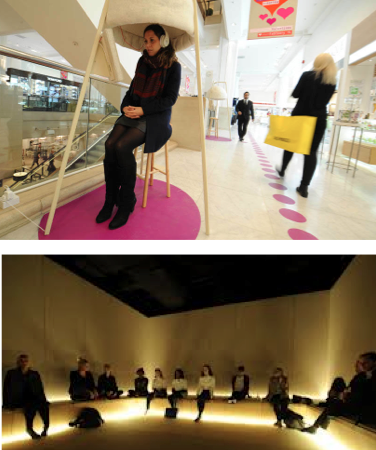 nnBut while these shopping tactics seem a bit far-fetched and extreme, many implemented technologies are being put in place to enhance the physicality of the shopping experience. A great example of the ways in which technology is being utilized for the greater good is the UK-based store Selfridges. As going to a mall can be a bit overwhelming, instead of completely eliminating the need for a physical consumer presence, Selfridges turns shopping into a soothing practice—and not just through retail therapy, but through actual meditation and relaxation. Selfridges focuses on “silencing” the shopping experience—many brands are eliminated to procure label-less bottles and apparel, customers can sit in a personal “silence” pod where they put on noise canceling headphones and just relax for a bit, customers can even sit in a completely silent room where the cacophony of information and numbers that accompanies shopping is completely eliminated. These kinds of experiences are used as more holistic approaches to the chaos that sometimes ensues at shopping malls and other brick and mortar establishments. By helping customers feel relaxed, Selfridges is eliminating any association shopping may have to obligation. As shopping can be exhausting, the store hopes to establish a calming atmosphere that will encourage their consumers to return again and again with the reassurance that there’s always an opportunity to take a break if need be.nn
nnBut while these shopping tactics seem a bit far-fetched and extreme, many implemented technologies are being put in place to enhance the physicality of the shopping experience. A great example of the ways in which technology is being utilized for the greater good is the UK-based store Selfridges. As going to a mall can be a bit overwhelming, instead of completely eliminating the need for a physical consumer presence, Selfridges turns shopping into a soothing practice—and not just through retail therapy, but through actual meditation and relaxation. Selfridges focuses on “silencing” the shopping experience—many brands are eliminated to procure label-less bottles and apparel, customers can sit in a personal “silence” pod where they put on noise canceling headphones and just relax for a bit, customers can even sit in a completely silent room where the cacophony of information and numbers that accompanies shopping is completely eliminated. These kinds of experiences are used as more holistic approaches to the chaos that sometimes ensues at shopping malls and other brick and mortar establishments. By helping customers feel relaxed, Selfridges is eliminating any association shopping may have to obligation. As shopping can be exhausting, the store hopes to establish a calming atmosphere that will encourage their consumers to return again and again with the reassurance that there’s always an opportunity to take a break if need be.nn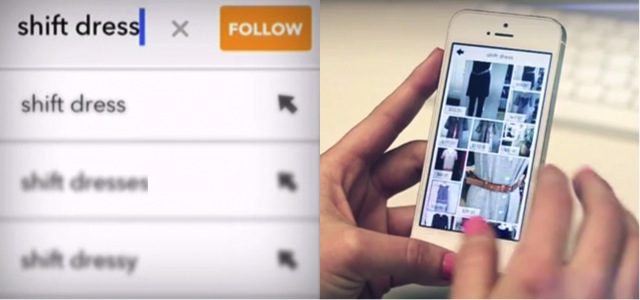 nnChanging the physical shopping experience isn’t the only benefit advancements in technology have on retail, it seems that technology has also changed the way fashion trends are implemented. It seems that with social media and widespread handheld devices, users and consumers can be the ones who determine what is fashionable. By using apps such as walkby by Material World, users can follow their favorite trends, offering designers and retail bigwigs the opportunity to determine what are the most fashion items. Not only are users linked to stores with trends they may like, but they are also given suggestions of different styles they may like.nn
nnChanging the physical shopping experience isn’t the only benefit advancements in technology have on retail, it seems that technology has also changed the way fashion trends are implemented. It seems that with social media and widespread handheld devices, users and consumers can be the ones who determine what is fashionable. By using apps such as walkby by Material World, users can follow their favorite trends, offering designers and retail bigwigs the opportunity to determine what are the most fashion items. Not only are users linked to stores with trends they may like, but they are also given suggestions of different styles they may like.nn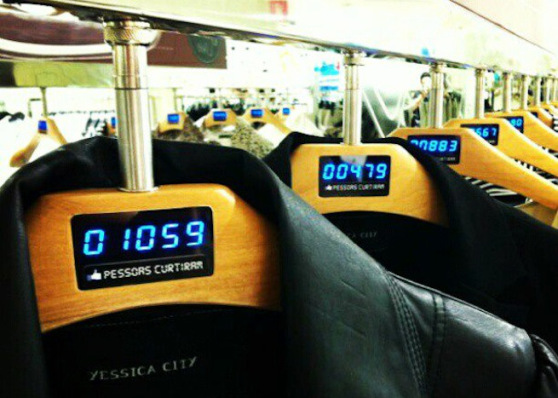 nnDutch retailer C&A has taken on a similar tactic to help shoppers have an easier time making purchase decisions. By using social media to promote products, the store offers a virtual “like” meter on each hanger, relieving customers from the obligation of needing a second opinion. Since online users are able to rate outfits via social media, customers are able to see which trends and brands are most popular, often helping them make a purchase decision. But these "like" meters aren't only helpful to shoppers, they also give the retailer the opportunity to gain a greater understanding of their products. Shop owners, designers and brands alike can all see which of their products are successful and which are not. Additionally, customers are usually more inclined to buy products that are deemed more popular because they want to be sure to get their hands on a "high demand" item.nn
nnDutch retailer C&A has taken on a similar tactic to help shoppers have an easier time making purchase decisions. By using social media to promote products, the store offers a virtual “like” meter on each hanger, relieving customers from the obligation of needing a second opinion. Since online users are able to rate outfits via social media, customers are able to see which trends and brands are most popular, often helping them make a purchase decision. But these "like" meters aren't only helpful to shoppers, they also give the retailer the opportunity to gain a greater understanding of their products. Shop owners, designers and brands alike can all see which of their products are successful and which are not. Additionally, customers are usually more inclined to buy products that are deemed more popular because they want to be sure to get their hands on a "high demand" item.nn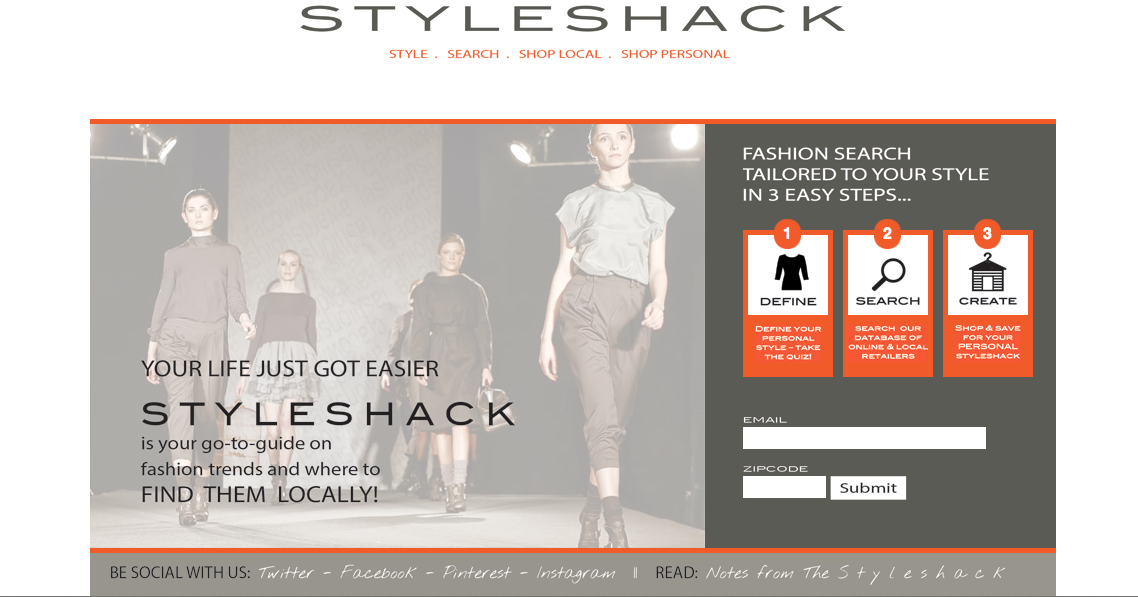 nnStyleshack has a similar mission–making shopping easier and more individualized, benefiting both the retailer and the customer. As a platform to connect customers to styles and trends that suit them best, Styleshack works to create a network of connections between designers, retailers, and consumers–something that fits nicely into the growing popularity of various social media platforms. In essence, Styleshack utilizes the digital and social technologies that have grown so much in the past decade by developing a style-based network that helps retailers and producers create a more personalized shopping experience.nnSo as technology has increased in its usefulness and popularity, so too has it evolved to become an important part of to the shopping experience. Although it seems that too much of technology can change the way we participate in commerce, using the benefits of the digital age to help us hone in on the shopping experience—be it helping us follow trends we like, see the popularity of different styles or simply access our favorite products in a more convenient place–can not only aid in a more efficient shopping experience, but can also turn focus from the mass production of goods for a broad, unknown group of consumers towards niche markets and individual shoppers. Regardless, the technological trends that are rapidly changing the way we live our lives are only going to become more prominent parts of our life. What is important, however, is how we utilize this explosion of technology, specifically, how we use it to enhance our consumer experiences.nn
nnStyleshack has a similar mission–making shopping easier and more individualized, benefiting both the retailer and the customer. As a platform to connect customers to styles and trends that suit them best, Styleshack works to create a network of connections between designers, retailers, and consumers–something that fits nicely into the growing popularity of various social media platforms. In essence, Styleshack utilizes the digital and social technologies that have grown so much in the past decade by developing a style-based network that helps retailers and producers create a more personalized shopping experience.nnSo as technology has increased in its usefulness and popularity, so too has it evolved to become an important part of to the shopping experience. Although it seems that too much of technology can change the way we participate in commerce, using the benefits of the digital age to help us hone in on the shopping experience—be it helping us follow trends we like, see the popularity of different styles or simply access our favorite products in a more convenient place–can not only aid in a more efficient shopping experience, but can also turn focus from the mass production of goods for a broad, unknown group of consumers towards niche markets and individual shoppers. Regardless, the technological trends that are rapidly changing the way we live our lives are only going to become more prominent parts of our life. What is important, however, is how we utilize this explosion of technology, specifically, how we use it to enhance our consumer experiences.nn nnWe'd love to hear your feedback! Email your thoughts to hello@styleshack.com.nn
nnWe'd love to hear your feedback! Email your thoughts to hello@styleshack.com.nn
